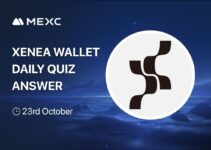Overview: a pivotal week for altcoins in 2025
Late November 2025 brings a concentrated slate of events that could influence altcoin liquidity, institutional flows and short-term price discovery. New regulated investment products for major memecoins and payment tokens, the public debut of a high-throughput Layer‑1, large token unlocks, and critical cross‑chain infrastructure launches all arrived within days of one another.

For market participants, the convergence of these catalysts underscores two persistent 2025 themes: expanding institutional access to non‑Bitcoin assets and accelerating multi‑chain infrastructure rollouts. Traders, builders and investors should monitor on‑chain activity, trading volumes and token unlock schedules as these events play out.
2025 market context: why these events matter
Institutional products and mainstream adoption continued to reshape crypto markets in 2025. Regulated investment vehicles for alternative tokens have broadened the on‑ramps for institutions and retail investors using traditional brokerage channels, increasing potential demand for listed tokens.
At the same time, the scaling and interoperability landscape remains dynamic. Layer‑1 and Layer‑2 networks offering EVM compatibility, higher throughput and flexible token economies are competing for developer activity and TVL (total value locked). Cross‑chain bridges and integrations are critical enablers of liquidity migration across those ecosystems.
Against this backdrop, the week’s announcements are notable not only for their individual importance but for the way they can interact — ETF inflows can increase liquidity and market depth, while mainnet launches and bridge openings determine where users choose to deploy capital and build applications.
New regulated ETFs for widely held altcoins
This week saw the launch of newly regulated exchange‑traded products that provide exposure to two highly liquid tokens. These listings are significant because they make the tokens more accessible to investors who prefer or are restricted to traditional brokerage accounts.
Key takeaways:
- Regulated products expand access: ETFs index a token’s market exposure into a single tradeable instrument, which typically increases investor participation from institutional and retail brokers.
- Short-term reactions can be muted: Even with listing announcements and first‑day trading, price moves have at times been modest as markets absorb incremental demand and arbitrage mechanisms stabilize spreads.
- Regulatory and structural differences: New crypto ETFs may have different registration or custody structures than traditional mutual funds, which can affect fees, tax treatment and risk profiles.
For market participants, the arrival of these ETFs represents both an expansion of distribution and a potential source of sustained demand should inflows continue throughout 2025 and into 2026.
Trading implications
- Watch trading volumes and fund flows: initial listings often show spikes in volume that later taper into persistent inflow/outflow patterns.
- Expect increased correlation with broader risk assets as institutional participation grows.
- Be mindful of differential custody and redemption mechanisms that can create premium/discount dynamics.
Mainnet launch and large token unlock: Monad (MON)
A new high‑performance Layer‑1 network launched its public mainnet this week. Built for full EVM compatibility, the network targets throughput, decentralization and security for smart contract developers and high‑volume dApps.
Notable protocol details:
- Total supply: 100 billion MON.
- Initial unlocked supply at launch: roughly 49.4% of the token pool became transferable immediately.
- Public sale: a multi‑day public sale earlier in November distributed several billion tokens to participants at a set sale price.
- Longer‑term unlock schedule: remaining tokens will vest over subsequent years with a multi‑year timeline to full circulation.
Large early unlocks can create significant selling pressure during initial price discovery. Markets will price in both the unlocked supply and the protocol’s expected growth in utility as developers and users migrate to the chain.
Risk and opportunity
- Opportunity: new mainnets can attract liquidity and developer interest rapidly if the network demonstrates low fees and robust tooling.
- Risk: nearly half of the supply becoming available immediately increases short‑term volatility and can complicate valuation.
- Monitor on‑chain metrics: active addresses, contract deployments and token flow to exchanges are early indicators of adoption versus sell pressure.
Infrastructure rollouts: MegaETH bridge and USDm stablecoin
A major infrastructure milestone this week was the opening of a pre‑deposit bridging mechanism that allows users to convert established stablecoins on Ethereum into a native USD‑pegged asset on an emerging mainnet (Frontier). The capped bridge enabled an orderly early migration of liquidity ahead of wider network activation.
Key features:
- Conversion path: USDC (Ethereum) → USDm (Mega mainnet).
- Capacity cap: an initial $250 million cap to manage onboarding and initial network load.
- Purpose: provide a native stablecoin for payments, DeFi and liquidity provisioning on the new chain before full mainnet activity scales up.
Bridge launches that permit stablecoin migration are essential to bootstrap DeFi liquidity on fledgling networks. The cap is intended to limit operational risk while allowing early testers and liquidity providers to access chain‑native tools.
Practical implications for users
- Early bridge participants help set initial TVL and market depth for the destination chain.
- Bridges carry counterparty and smart contract risk; users should weigh those risks relative to potential yields on the destination network.
- Monitor slippage, bridge fees and settlement times during the first days of operation.
Cross‑chain expansion: Solv integrates Solana
In an example of continued multi‑chain expansion, a DeFi protocol completed integration with Solana, enabling its users to operate across a broader set of blockchains. This move reflects a wider industry pattern of protocols embracing multi‑chain strategies to capture liquidity and user diversity.
Why this matters:
- Access to Solana’s on‑chain throughput and developer tooling can expand a protocol’s product offerings.
- Cross‑chain integrations can boost arbitrage flows and increase composability for DeFi primitives.
- Successful integrations often coincide with promotional liquidity programs to incentivize cross‑chain migration.
Watch points
- Cross‑chain volume increases and synthetic liquidity products may follow integration announcements.
- Security audits and bridge safeguards are central to safe cross‑chain operation; look for public audit disclosures and insurance/backstop mechanisms.
Community and developer events: Arbitrum in Asia
Layer‑2 ecosystems continue to rely on regional meetups and hackathons to cultivate developer engagement. This week included a community gathering in Hong Kong that brought together builders and researchers to demo projects, share upgrades and coordinate local developer outreach.
Such events can catalyze near‑term announcements — from tooling releases to partnership pilots — that affect developer attention and potentially token demand.
Why on‑chain investors should care
- Developer activity is a leading indicator of future protocol usage and utility demand.
- Announcements from community events can generate momentum for network upgrades, grants and incentive programs.
- Market reactions to event news are typically short‑term but can seed longer cycles of adoption.
How traders and investors can position
Given the mix of institutional products, mainnet economics and infrastructure rollouts, market participants should balance opportunity with prudent risk management.
Suggested considerations:
- Monitor fund flows and ETF AUM trends to understand where institutional demand is concentrating.
- Track token unlock calendars closely — large, predictable unlocks frequently precede volatility.
- Use on‑chain analytics to assess genuine adoption signals (active addresses, smart contract interactions, TVL) rather than price movements alone.
- Diversify exposure across infrastructure, layer‑1/2, and application‑level tokens to reduce idiosyncratic risk.
- Implement position sizing and stop management to protect capital during event‑driven volatility.
Outlook for the remainder of 2025
As 2025 progresses toward year‑end, the broader market is likely to remain sensitive to institutional adoption signals and infrastructure maturity. Regulated access through ETFs and other tradable products could steadily increase liquidity for select altcoins, while mainnet launches and cross‑chain bridges will shape where decentralized activity concentrates in 2026.
Investors should expect continued interplay between centralized institutional demand and decentralized utility adoption. The projects that demonstrate real usage, developer interest and robust governance frameworks are better positioned to convert short‑term headlines into sustainable growth.
Where to monitor updates
Stay informed with reliable on‑chain dashboards, project governance channels, and reputable market reports. For traders who want access to spot markets, derivatives and custody services, MEXC provides a range of trading tools and listings to follow these evolving markets — learn more at MEXC.
Market events concentrated into a single week can reshape price dynamics and liquidity patterns. Careful analysis of supply schedules, protocol adoption metrics and institutional flows will be critical for navigating the final months of 2025 and planning for developments in 2026.
Disclaimer: This post is a compilation of publicly available information.
MEXC does not verify or guarantee the accuracy of third-party content.
Readers should conduct their own research before making any investment or participation decisions.
Join MEXC and Get up to $10,000 Bonus!
Sign Up


